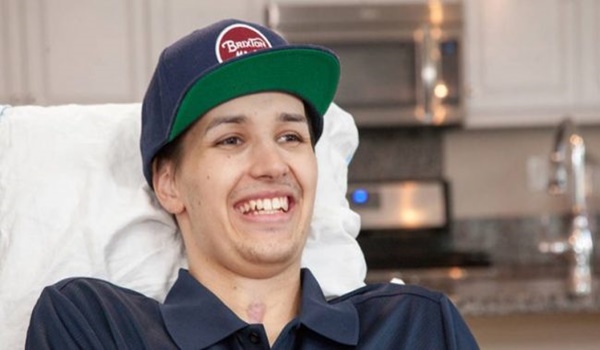Medicine has dramatically advanced in the last several decades, and numerous people have managed to reap the benefits of the process. Advancements in medical technology have helped physicians to better diagnose and treat patients since the beginning of the professional practice of medicine.
The continuous development of technology in the medical field has also saved countless lives and the overall quality of life continues to improve over time. Fortunately, the tech industry builds value by democratizing technology, reducing its cost and enabling it to reach billions of people in need.
Even though he feared that he would be paralyzed for the rest of his life, after he underwent a landmark stem cell therapy procedure, Kris Boesen, a 21-year old man from Bakersfield, California, was healed.
He was left permanently paralyzed from the neck down after a severe car accident when he was younger.
He was driving along a winding stretch of wet road in Maricopa, California, when his white Nissan 350Z fishtailed out of control and careened into a curb, a tree and then a telephone pole, breaking Boesen’s neck.
After the accident, Kris could only move his left arm up and down, he couldn’t use his legs, and his hands were stuck in a clenched position.
He was now dependent on others for the simplest of tasks, like eating and drinking, and he needed two attendants 24/7 to help him go to the bathroom and change his position in bed to prevent pressure ulcers.
He remembers:
“I was basically just existing. I wasn’t really living my life.”
The transplant was done by Charles Liu, MD, Ph.D., director of the USC Neurorestoration Center, and a professor of clinical neurological surgery at the Keck School of Medicine of USC.
He was the lead surgeon of the team, working in collaboration with the Rancho Los Amigos National Rehabilitation Center and Keck Medicine of USC, and said that this was a very experimental procedure, and referred to it as a “study.”
The procedure is part of a clinical trial sponsored by the California Institute for Regenerative Medicine through Asterias Biotherapeutics and involving five other clinical sites, intending to help people with spinal cord injuries gain independence.
Boesen was injected with an experimental dose of 10 million AST-OPC1 cells directly into his cervical spinal cord at the Keck Hospital of USC.
Liu explained:
“Typically, spinal cord injury patients undergo surgery that stabilizes the spine but generally does very little to restore motor or sensory function. With this study, we are testing a procedure that may improve neurological function, which could mean the difference between being permanently paralyzed and being able to use one’s arms and hands. Restoring that level of function could significantly improve the daily lives of patients with severe spinal injuries.”
The treatment was performed in April of 2016, and Kris has shown incredible progress during rehabilitation. It only two weeks, he regained control and sensation in his arms and hands.
Liu added:
“As of 90 days post-treatment, Kris has gained significant improvement in his motor function, up to two spinal cord levels. In Kris’ case, two spinal cord levels mean the difference between using your hands to brush your teeth, operate a computer or do other things you wouldn’t otherwise be able to do, so having this level of functional independence cannot be overstated.”
Kris’s parents said they are amazed at the level of collaboration and cooperation that enabled their son to participate in the study.
His father said:
“So many things had to happen, and there were so many things that could have put up a roadblock. The people at Keck Medical Center of USC and elsewhere moved heaven and earth to get things done. There was never a moment through all of this when we didn’t think our son was getting world-class care.”
Kris believes the procedure can help him walk someday again.
“All I’ve wanted from the beginning was a fighting chance…But if there’s an opportunity for me to walk again, then heck yeah! I want to do anything possible to do that.”
The stem cell treatments are giving patients hope, and more facilities are trying the procedure after the success of Boesen.
Last year, the Mayo Clinic opened up stem cell therapy trials for ten people suffering from traumatic spinal cord injuries, and a study at the University of Minnesota Medical School suggests that spinal cord stimulation using stem cells does help to heal paralysis in many circumstances.


